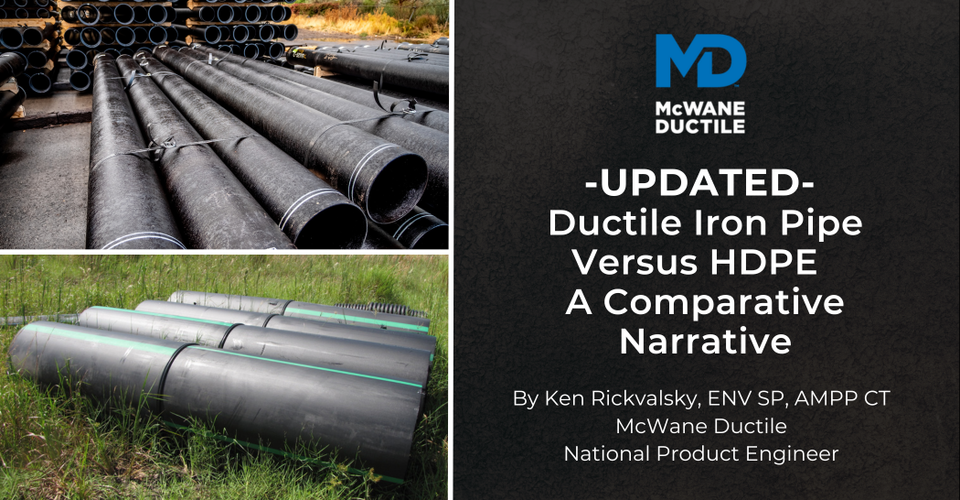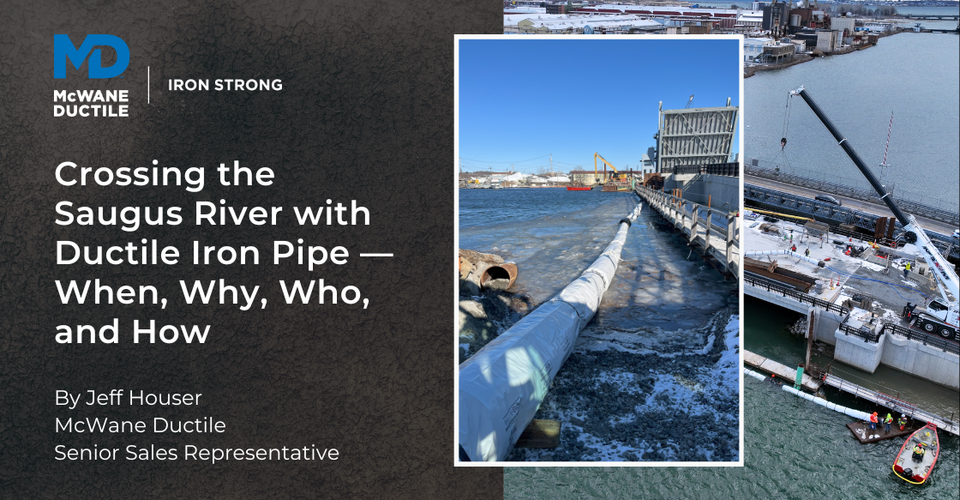In recent years, an increasing number of locales and authorities have adopted greater controls of the water used in hydrostatic testing, flushing, and disinfection of utility pipelines, post-installation. Whether from a feeder hydrant to be metered, or when there might be a fee applied on the volume of water used, how does an engineer, contractor, or inspector compute the amount of water needed for these tasks?
Sometimes it is required to demonstrate during flushing operations that the water inside a pipeline section has been “exchanged” a designated number of times during the specified flushing. So, just how much water does it take to fill or flush 1,500 feet of 12-inch class 52 DI pipe?
Computation Basics
The volume of water inside a pipeline is computed as if it were a solid column that is size-equivalent to the circular area based on the inside diameter (ID) of the pipe, expressed in square feet, multiplied by the length of the pipeline section in question, and then converted to gallons.
It really is that simple, but where do you find the exact ID of a particular pipe, and what if you have 4 or 5 different diameters and/or wall classes of pipe in the pipeline section you are computing? Hand-calculator overload for sure!
Hard Answers Easily Found
The McWane Pocket Engineer Volume Calculator is the best way to go! And absolutely the quickest! This first video in our planned series of 11 videos, starring one of our Pocket Professors Aaron Loosli, explains and demonstrates the use of this calculator to allow designers and constructors to quickly determine their water usage needs, down to the gallon!
It all starts by going directly to pe.mcwane.com. There, you can find the desktop version and links to download the app to your mobile device.
The easy-to-use Input arrangement of the Volume Calculator makes it simple to compute. It will take 9,315 gallons to fill the 1,500 feet of 12-inch class 52 Ductile iron pipe we mentioned at the start of this article. Exchanging this water three times during flushing operations would use another 27,945 gallons at a minimum (more than 37,000 gallons total).
These volumes can be used to estimate the number of water trucks needed to deliver the total amount required, or even how long to draw water from a hydrant and hose of a known flow capacity.
Coming Soon
We at McWane Ductile have an intended schedule towards creating the remaining ten calculator tutorial videos across the remainder of 2021 and early 2022. If you, as a designer with a project in hand, or just as a curious technical professional, would like to see one of the other calculators in the Pocket Engineer demonstrated before some others…drop us a note by emailing us at marketing@McWaneDuctile.com. We would love to hear from you! No strings attached. We simply want to serve your needs when they are needed!
Together, Building Iron Strong Utilities for Generations is the sole goal. If you have any questions regarding your water or wastewater infrastructure project, be sure to reach out to your local McWane Ductile representative. We have team members who've managed small and large water utility systems, served in engineering consulting firms, and bring decades of experience in solving field issues involving pipeline construction and operation. From design to submittal, to installation, we strive to provide education and assistance to water professionals throughout the water and wastewater industry.












